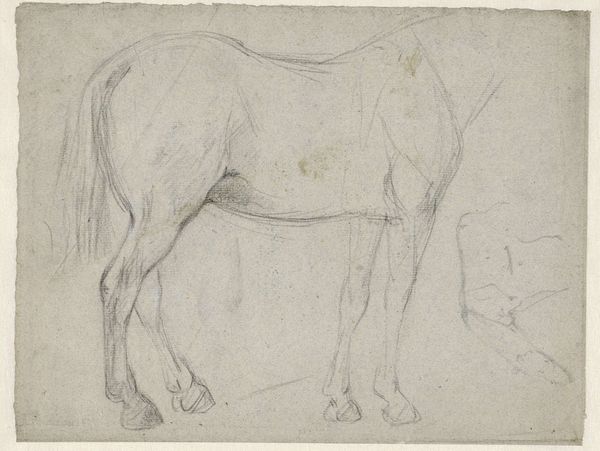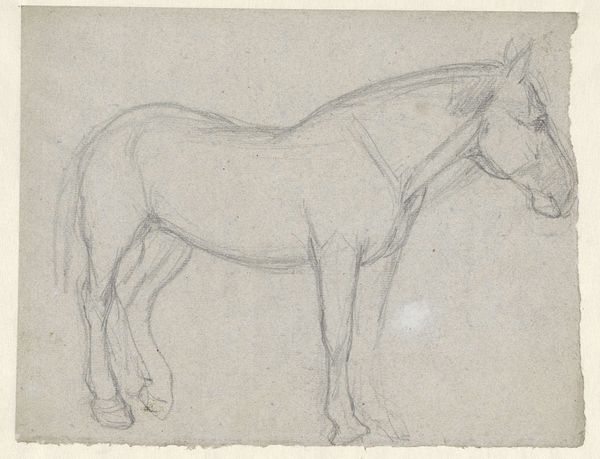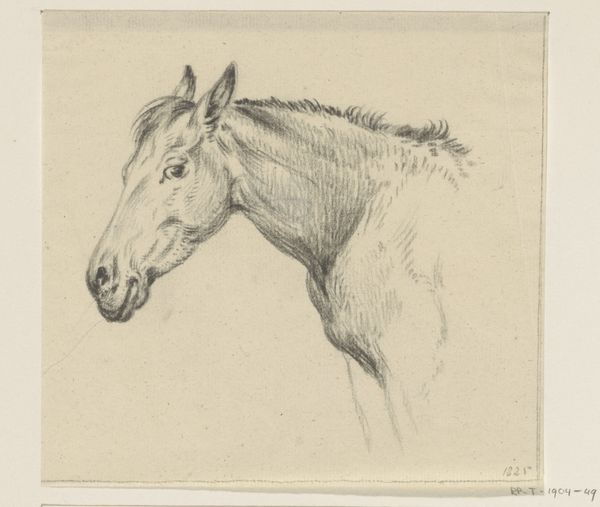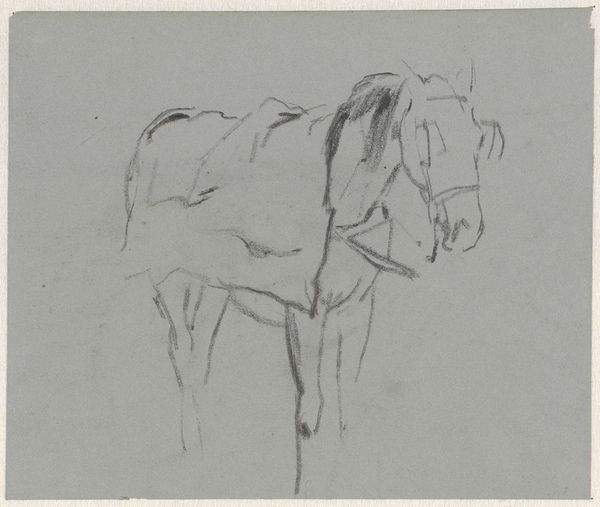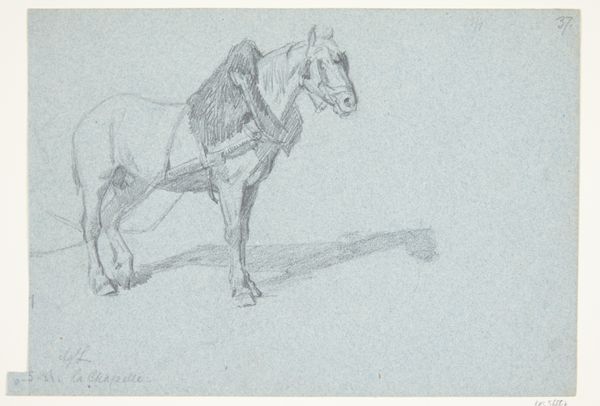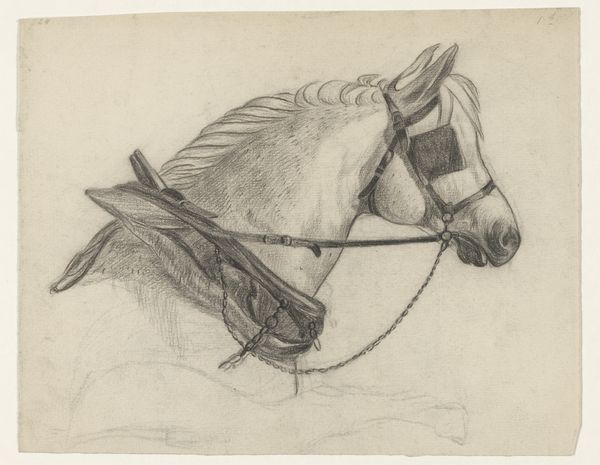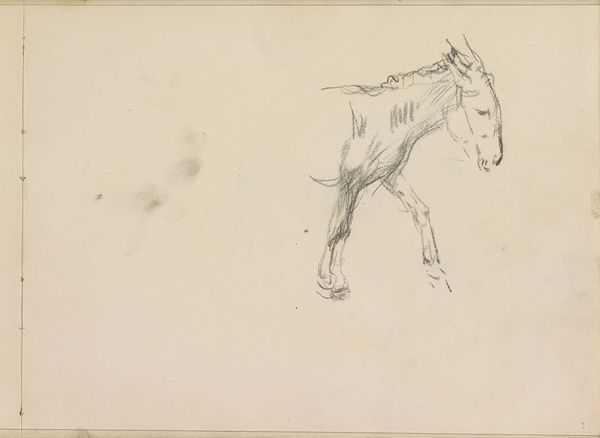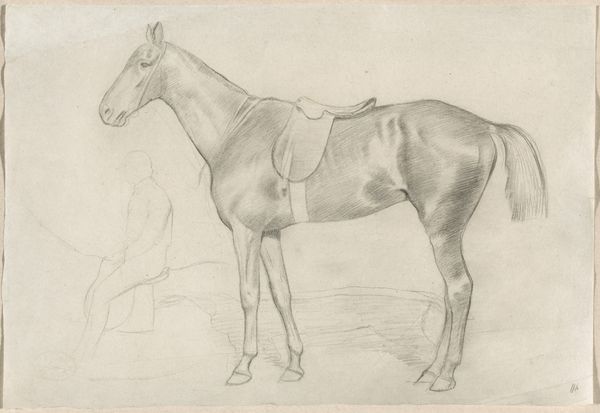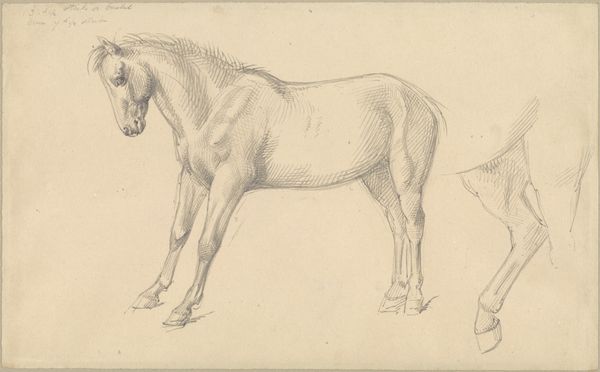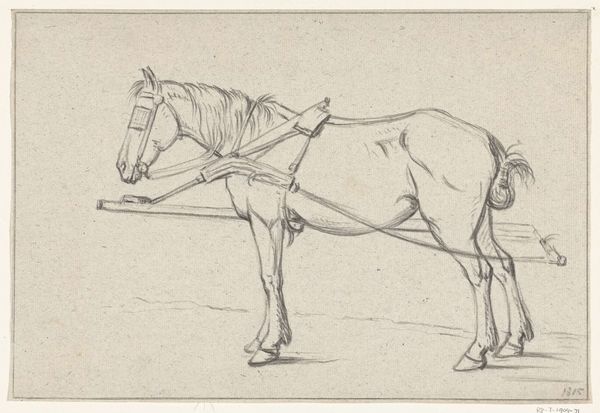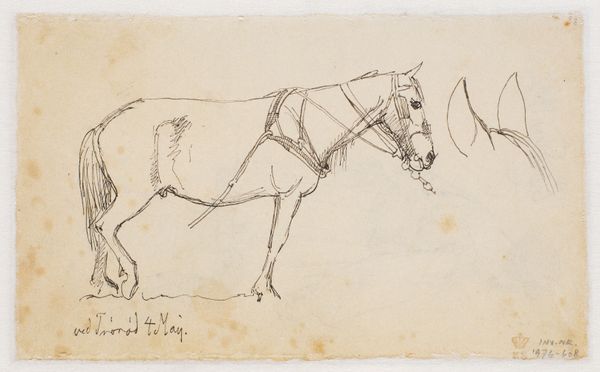
drawing, paper, pencil
#
portrait
#
drawing
#
paper
#
form
#
pencil
#
horse
#
realism
Dimensions: height 237 mm, width 310 mm
Copyright: Rijks Museum: Open Domain
Curator: Looking at these pencil sketches on paper by Jan Kuyper, called "Studies van een paard," dating from 1855 to 1912, I immediately think about the symbolic importance of the horse through time. Editor: The materiality speaks of study and practice. Look at the economical use of line, the type of paper he’s chosen, these weren’t meant for grand display. They were tools for… labor, really, of seeing and capturing. It’s interesting. Curator: The horse as a symbol appears in cultures across the globe as an emblem of nobility, war, and freedom. Considering the period these studies were created, the social connotations tied to equestrianism would still have been quite pronounced. Kuyper’s interest may lie in those cultural resonances. Editor: I see something a bit more grounded, if you will. I'm interested in the working-class associations around this drawing. Consider how central horses were to agriculture, transport, industry… Their presence was interwoven with working lives. Was Kuyper studying a work animal, imbuing it with its own inherent dignity? Curator: That's a fascinating point, especially in light of artistic representations frequently associating the horse exclusively with aristocratic leisure or military power. But look closely at the soft rendering of the animal’s eye and the tender rendering of its muzzle: It speaks, perhaps, of empathy and observation. The horse becomes more than merely symbolic here. Editor: The intimacy certainly comes across through that fine application of pencil. The paper, too, almost appears like skin itself in its thinness, further hinting at organic form that carries a real sense of lived labor. The drawing isn't just about capturing a subject; it shows how art, too, comes from real materials, and from real, sustained effort. Curator: And through that synthesis of empathy, symbolic weight, and technical rendering, Kuyper allows us a closer inspection into not just the exterior appearance but perhaps a little of the inner spirit. Editor: Leaving us, finally, considering not just WHAT is portrayed, but HOW the object and the act of drawing themselves carry cultural value and can represent shared realities of that time.
Comments
No comments
Be the first to comment and join the conversation on the ultimate creative platform.
